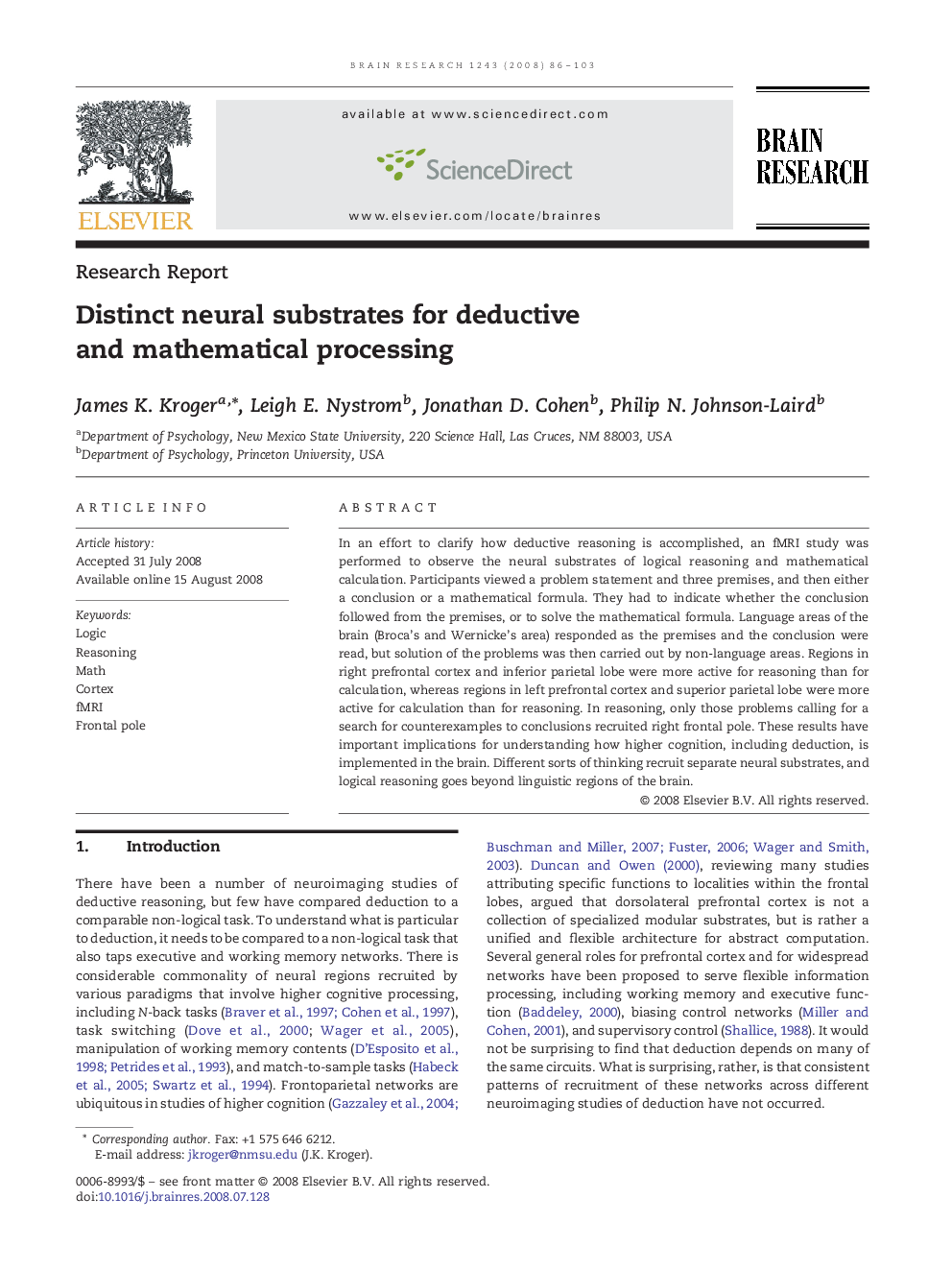| Article ID | Journal | Published Year | Pages | File Type |
|---|---|---|---|---|
| 4328953 | Brain Research | 2008 | 18 Pages |
In an effort to clarify how deductive reasoning is accomplished, an fMRI study was performed to observe the neural substrates of logical reasoning and mathematical calculation. Participants viewed a problem statement and three premises, and then either a conclusion or a mathematical formula. They had to indicate whether the conclusion followed from the premises, or to solve the mathematical formula. Language areas of the brain (Broca's and Wernicke's area) responded as the premises and the conclusion were read, but solution of the problems was then carried out by non-language areas. Regions in right prefrontal cortex and inferior parietal lobe were more active for reasoning than for calculation, whereas regions in left prefrontal cortex and superior parietal lobe were more active for calculation than for reasoning. In reasoning, only those problems calling for a search for counterexamples to conclusions recruited right frontal pole. These results have important implications for understanding how higher cognition, including deduction, is implemented in the brain. Different sorts of thinking recruit separate neural substrates, and logical reasoning goes beyond linguistic regions of the brain.
